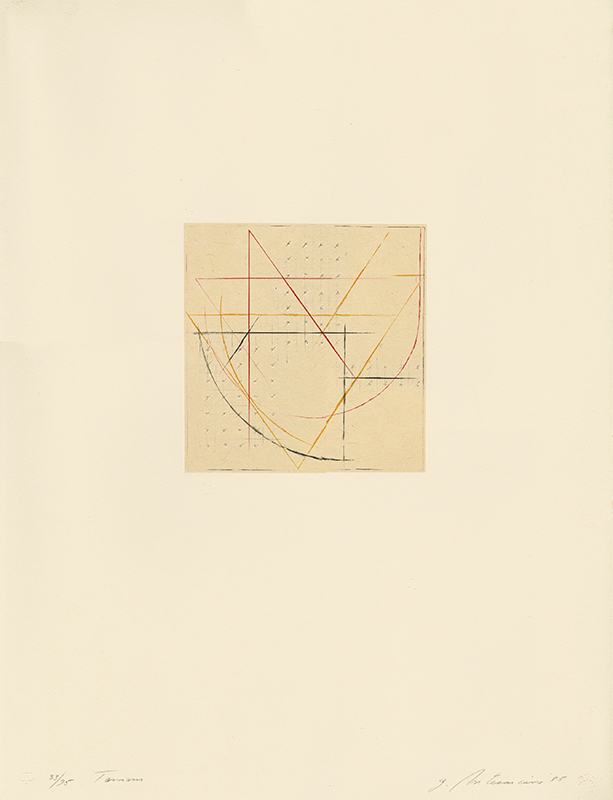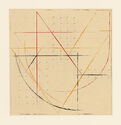
19th, 20th & 21st Century Fine Prints
707-546-7352 · fax 707-546-7924 · web: www.annexgalleries.com · email: artannex@aol.com
Tamam by Garo Zareh Antreasian



Tamam
Garo Zareh Antreasian
Tamam
Garo Zareh Antreasian
1922 - 2018 (biography)A color lithograph in red, orange, and black on delicate ivory Kitakata collaged to buff Arches wove, then perforated in grid patterns by Tamarind printer Russell James Craig. This was made at a time of great change for Antreasian, who had taken a break from teaching to visit his Armenian family's homeland, Turkey, in 1982. Intending only to learn about his heritage and history, the visit inadvertantly became a journey of inspiration, found in the ancient Islamic architecture, tile work, metalwork, and mosaics that surrounded him. On occasion the holy places were "piles of stone, but penetrated by lights and color and vaulted airy space." (Krause, Martin. Garo Antreasian: Written in Stone - Catalogue Raisonne of Prints. Indianapolis Museum of Art, 1995, p. 137.)
In "Tamam", the essence of these inspiring elements are simply and elegantly shown in the gently curving lines superimposed over a faintly drawn grid, and the perforations that allow for light to emerge through the work. Antreasian's title, "Tamam", is the Ottoman Turkish word for "precisely", derived from Arabic word for "complete" or "perfect".
Garo Zaereh Antreasian, painter, printmaker, master printer, and educator, was born in Indianapolis, Indiana on February 16, 1922. He began studying lithography at age seventeen at the Arsenal Technical High School and followed that with formal art training at the School of the Herron Art Institute where, in 1948, he received his Bachelor of Fine Arts degree. Upon graduation he was given a formal appointment to the faculty of the Herron and a $1,200.00 Mary Miliken Memorial Traveling Scholarship. The following year, Antreasian used a portion of the scholarship to study printmaking in New York at the Art Students' League under Will Barnet and at Atelier 17 with Stanley William Hayter.
After working as an instructor at the School of the Herron Art Institute, Antreasian became the first technical director and master printer at the newly formed Tamarind Lithography Workshop in Los Angeles in 1960. In 1965, he relocated to Albuquerque, New Mexico where he also taught in the Art Department of the University of New Mexico and was instrumental in bringing the workshop from Los Angeles to UNM as Tamarind Institute. In 1971, he co-wrote Tamarind Techniques for Fine Art Lithography with Clinton Adams, which became the definitive text for creative lithography internationally. Antreasian was one of very few artists at Tamarind with significant technical skill in lithography. In the 1970s, he turned to hard-edge abstraction and became known among printers for his use of the rainbow roll. Garo Zareh Antreasian died in Albuquerque, New Mexico on November 3, 2018 at age 96.

